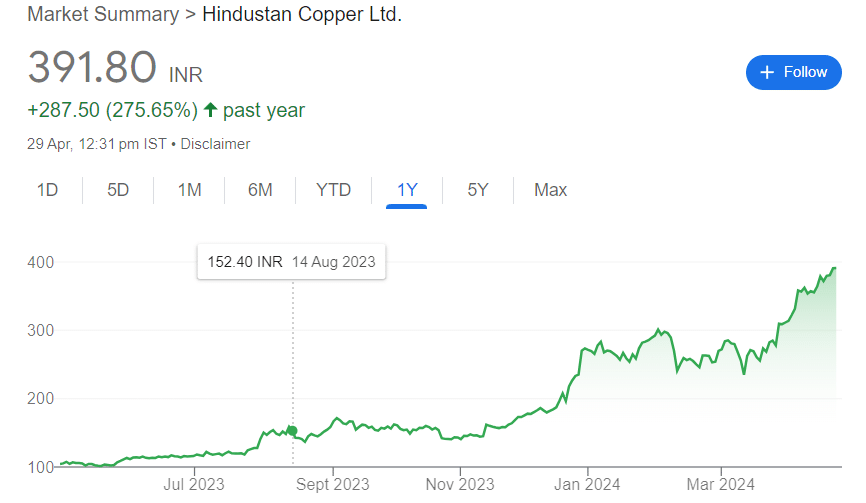Mid Cap Index: Uncover the often-overlooked potential of mid-cap stocks with our insightful exploration of the mid-cap index.
also read RVNL Share News: Insights into Market Performance and Project Developments
Introduction: Mid Cap Index
In the vast landscape of financial markets, where the spotlight often shines brightly on large-cap behemoths or the high-risk, high-reward allure of small-cap stocks, there exists a segment that frequently goes overlooked—the mid-cap index. Nestled between the giants and the upstarts, mid-cap companies form the backbone of many economies and investment portfolios. In this article, we delve into the unique characteristics, opportunities, and considerations surrounding the mid-cap index.
Understanding the Mid Cap Index:
Mid-cap stocks typically represent companies with market capitalizations between those of large-cap and small-cap stocks. While there’s no universally accepted definition, mid-cap companies often fall within the range of $2 billion to $10 billion in market capitalization. These companies are not as established as their large-cap counterparts but have progressed beyond the early stages of small-cap volatility, offering a compelling mix of growth potential and stability.
Characteristics of Mid Cap Stocks:
- Growth Potential: Mid-cap companies are often in the growth phase of their lifecycle. They have successfully navigated the initial hurdles of small-cap status and now possess the potential to capture market share, expand operations, and increase revenues and profits at a faster rate than their larger counterparts.
- Market Resilience: Unlike small-cap stocks, mid-cap companies usually have more established business models, stronger balance sheets, and proven track records. This relative stability can offer a buffer during economic downturns compared to smaller, riskier firms, while still presenting opportunities for capital appreciation.
- Underappreciated Value: Despite their growth potential and resilience, mid-cap stocks are sometimes undervalued by investors. The lack of attention from Wall Street analysts and institutional investors can result in pricing inefficiencies, providing astute investors with opportunities to capitalize on undervalued assets.
Investing in the Mid Cap Index:
- Diversification: Investing in a mid-cap index fund or ETF offers exposure to a diversified portfolio of mid-cap stocks, spreading risk across various sectors and companies. This diversification can help mitigate individual stock risk while capturing the growth potential inherent in the mid-cap segment.
- Research and Due Diligence: As with any investment, thorough research and due diligence are paramount when considering mid-cap stocks. While these companies may offer attractive growth prospects, investors should assess factors such as industry trends, competitive positioning, management quality, and financial health before making investment decisions.
- Long-Term Perspective: Investing in mid-cap stocks requires a long-term perspective. While these companies may experience greater volatility compared to large-cap stocks, patient investors willing to weather short-term fluctuations may be rewarded with substantial returns as mid-cap companies mature and realize their growth potential.
Q & A
What is mid cap index fund?
A mid-cap fund, like a mutual fund, concentrates on companies with market capitalizations in the middle range of listed stocks, offering investors enhanced growth potential compared to large caps, yet with lower volatility and risk relative to small caps.
What is mid-cap Nifty?
Mid-cap companies typically fall within the 101st to 250th positions in the Nifty Index, representing a segment with moderate market capitalizations. India’s Nifty Midcap 50 serves as a benchmark for mid-cap stocks, comprising the 50 most actively traded securities within this range.
What is mid-cap stocks?
Mid-cap stocks denote equities representing companies with a moderate market capitalization. In the Indian stock market context, a mid-cap stock typically boasts a market capitalization spanning from Rs. 5,000 crores to Rs. 20,000 crores.
What is the difference between large-cap and mid cap index?
Understanding the distinctions between large-cap, mid-cap, and small-cap stocks is crucial for novice investors in the stock market. Each category offers varying levels of growth potential and risk. Small-caps typically embody growth potential, mid-caps strike a balance between stability and expansion, while large-caps represent dependable, well-established businesses.
Which is better large-cap or mid-cap?
Large-cap funds offer lower risk compared to small and mid-cap funds, while small and mid-cap funds present higher growth potential. Large-cap funds suit conservative investors, whereas mid and small-cap funds cater to medium-risk to aggressive investors.
How many stocks are in mid-cap?
The Nifty Midcap 50 comprises the top 50 companies selected based on their full market capitalization from the Nifty Midcap 150 index, with priority given to stocks for which derivative contracts are tradable on the National Stock Exchange (NSE).
Conclusion: Mid Cap Index
The mid-cap index represents a unique opportunity for investors seeking a balance between growth potential and stability within their investment portfolios. With a diverse array of companies spanning various industries and sectors, mid-cap stocks offer the potential for capital appreciation while mitigating some of the risks associated with small-cap investments. By understanding the characteristics, opportunities, and considerations surrounding the mid-cap index, investors can harness the power of this hidden gem to achieve their financial goals.
also read BSE MIDCAP











2 thoughts on “Mid Cap Index: Unveiling the Hidden Gem, Know The Term Before Investment”
Comments are closed.